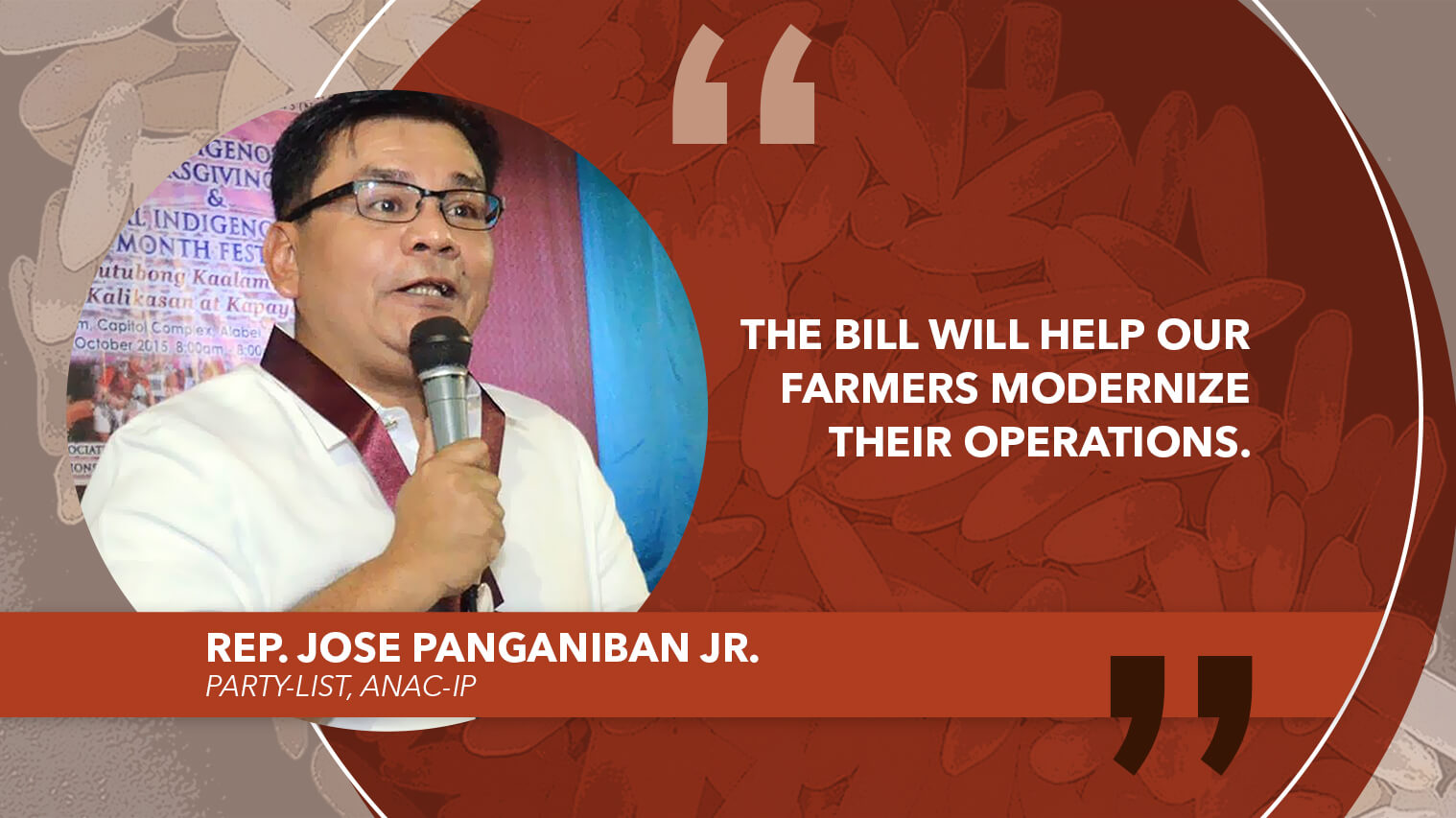The rice tariffication bill, when signed by President Rodrigo Duterte, will greatly benefit not just consumers, but rice farmers as well.
This was the assurance given by House Agriculture Committee chair and ANAC-IP Rep. Jose T. Panganiban, Jr., who on Monday spoke of the benefits of the measure after the bill hurdled the bicameral conference committee last Thursday.
The measure seeks to lift the quantitative restrictions on rice imports and replace these with tariffs. The President certified its passage as urgent, as the country’s economic managers have identified it as key to stabilizing rice prices amid inflation.
“Hopefully we can ratify the bill and send it to the President for his signature this week.”
Panganiban explained that under the measure, P10 billion would be set aside to set up the Rice Competitiveness Enhancement Fund or Rice Fund (RCEF).
The RCEF will be used to purchase machinery and equipment, seed production, and training on rice farming.
A portion of the fund will also be made available to farmers and cooperatives in the form of a credit facility with minimal interest and minimum collateral requirements.
“Bukod sa pagpapababa ng presyo ng bigas, the bill will help our farmers modernize their operations so they can improve their output while lowering production costs,” said the solon, who sponsored the bill in the House of Representatives.
“Farmers will have a ready buyer for their palay.”
The legislator also eased fears that the measure would put local farmers at a disadvantage. Aside from establishing the RCEF, the bicameral committee also agreed to limit the National Food Authority’s functions to maintaining a buffer stock that will be sourced from Filipino farmers.
“This means that farmers will have a ready buyer for their palay. Hindi pababayaan ang mga magsasaka,” stressed Panganiban.
The approved bicameral committee report will now be sent to both Houses of Congress for ratification.
“Hopefully we can ratify the bill and send it to the President for his signature this week. We are aiming for the measure’s implementation by the start of next year.”


